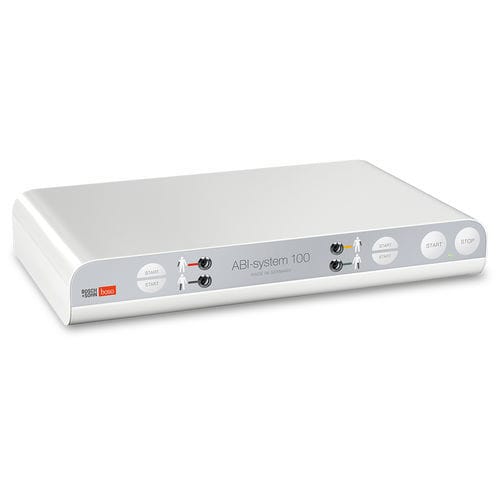
- Medical Technical Facilities
- Monitoring
- Tabletop patient monitor
- Boso, Bosch + Sohn

- Products
- Catalogs
- News & Trends
- Exhibitions
ABI patient monitor portabletabletopblood pressure
Add to favorites
Compare this product
Characteristics
- Configuration
- portable, tabletop
- Measured parameter
- blood pressure
- Applications
- cardiovascular, oscillographic
- Technology
- ABI
- Other characteristics
- computer-based, oscillographic
- Weight
3.8 kg
(8.4 lb)
Description
The measurement of the ankle-brachial index with the boso ABI-system takes 1 minute and also discovers asymptomatic patients. Reliable and simple – so it can easily be delegated to employees. Optional with PWV measurement for the evaluation of arterial stiffness.
The sophisticated software accurately calculates ABI both on the left and on the right side.
Other important cardiovascular parameters are also measured, such as individual blood pressure readings in arms and legs, differences in blood pressure on different sides of the body (subclavian artery stenosis), pulse, pulse pressure, oscillation profile and pointers to possible cardiac dysrhythmia disorders. This information is easily identifiable as all critical values are highlighted in a different colours.
Decisive: The ankle brachial index.
The ankle brachial index is the best predictor of heart attack, stroke and mortality. An ABI reading of < 0.9, compared with the angiogram as the gold standard, has a sensitivity of up to 95% in identifying PAOD, and conversely rules out this condition in healthy people with a specificity of almost 100%.¹ The getABI study² shows that the prevalence of PAOD among individuals aged over 65 is 20%.
The method previously used to measure ABI was Doppler ultrasound, which is very time-consuming and only produces reliable results if the operator is highly experienced in the procedure. This means that vascular tests are normally only conducted at a point when an existing PAOD may already have led to symptomatic or asymptomatic cardiovascular conditions, even in high-risk groups such as smokers, diabetics or elderly people.
Catalogs
No catalogs are available for this product.
See all of Boso, Bosch + Sohn‘s catalogsRelated Searches
- Patient monitor
- Blood pressure patient monitor
- Portable patient monitor
- Compact patient monitor
- Blood pressure cuff
- Latex-free cuff
- Tabletop patient monitor
- 2-tube cuff
- L cuff
- XL cuff
- Washable cuff
- Cardiology patient monitor
- M cuff
- S cuff
- Blood pressure monitor cuff
- Velcro® cuff
- Computer-based patient monitor
- ABI patient monitor
- Oscillographic patient monitor
- Cardiovascular patient monitor
*Prices are pre-tax. They exclude delivery charges and customs duties and do not include additional charges for installation or activation options. Prices are indicative only and may vary by country, with changes to the cost of raw materials and exchange rates.
